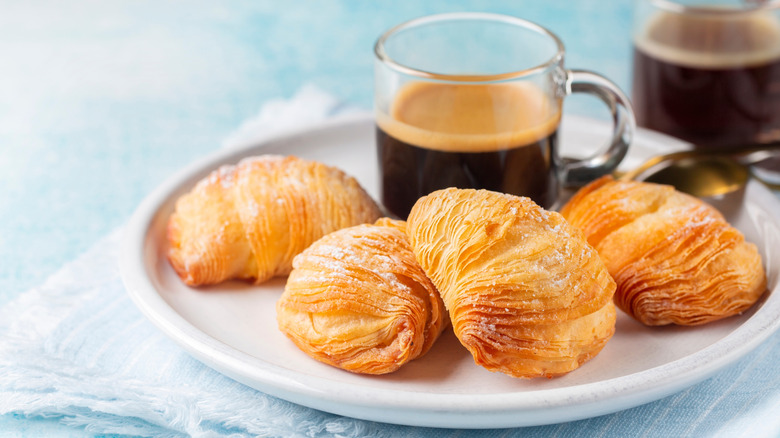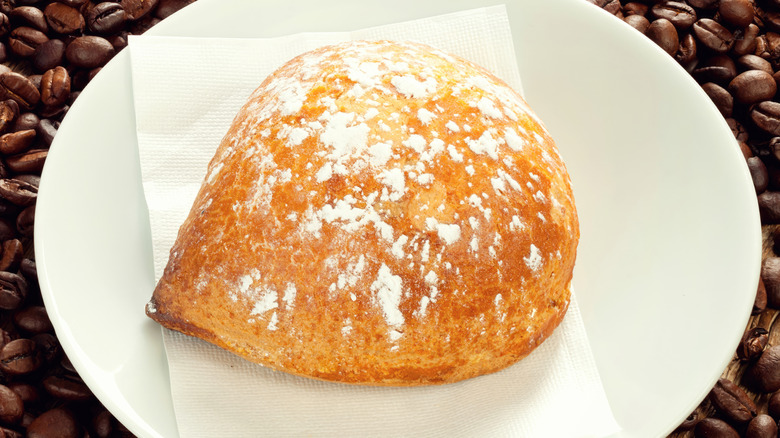The Authentic Italian Pastry That's As Hard To Make As It Is To Spell
It's pretty likely that you haven't yet heard of the sfogliatella, or "sfogliatelle" in the plural, which is an Italian dessert you should know about. A sfogliatella consists of thin, flaky layers of pastry on the exterior and a vanilla-citrus-flavored filling made with semolina flour and ricotta. The shape of the pastry resembles a shell, with multiple pastry layers visible — because of this, these treats are sometimes called lobster tails or lobster claws.
If it sounds like making sfogliatelle would be a complicated process, that's because it is — this may not be the pastry to start with if you're new to baking. The dough requires a lot of time and attention. There's plenty of kneading and rolling, as well as running it through a pasta maker to get it thin enough for what the pastry requires — and you'll need to make sure you avoid the mistakes everyone makes when using a pasta machine. You have to fold the dough after running it through the machine, subsequently repeating both steps a few more times. Finally, you'll have to stretch the dough by hand.
The filling requires two steps: Combining ingredients in a saucepan and then blending everything in a food processor. You achieve the shell-like shape by rolling the dough and then cutting spirals, which are then delicately shaped by hand before the filling is added. After all of that, all that's left to do is bake — and enjoy the fruits of your labor.
There's actually two types of sfogliatelle — and one is a little easier to make
There are actually two types of sfogliatelle. The most common type is the sfogliatella riccia, described above. However, the second variety, the sfogliatella frolla, is similar to its counterpart but much simpler to make. The filling is typically the same, but the exterior pastry shell doesn't have the same layers as the sfogliatella riccia.
The sfogliatella frolla uses shortcrust dough, which is often used for pies and tarts — and one of the many different types of pastry dough. But, notably, it's easier to work with, so making sfogliatella frolla is much simpler than making sfogliatella riccia as it requires less prep time. So, if you're interested in trying your hand at making sfogliatella, then you may want to try the frolla variation first — especially since it has the same tasty filling as the more complicated version.

